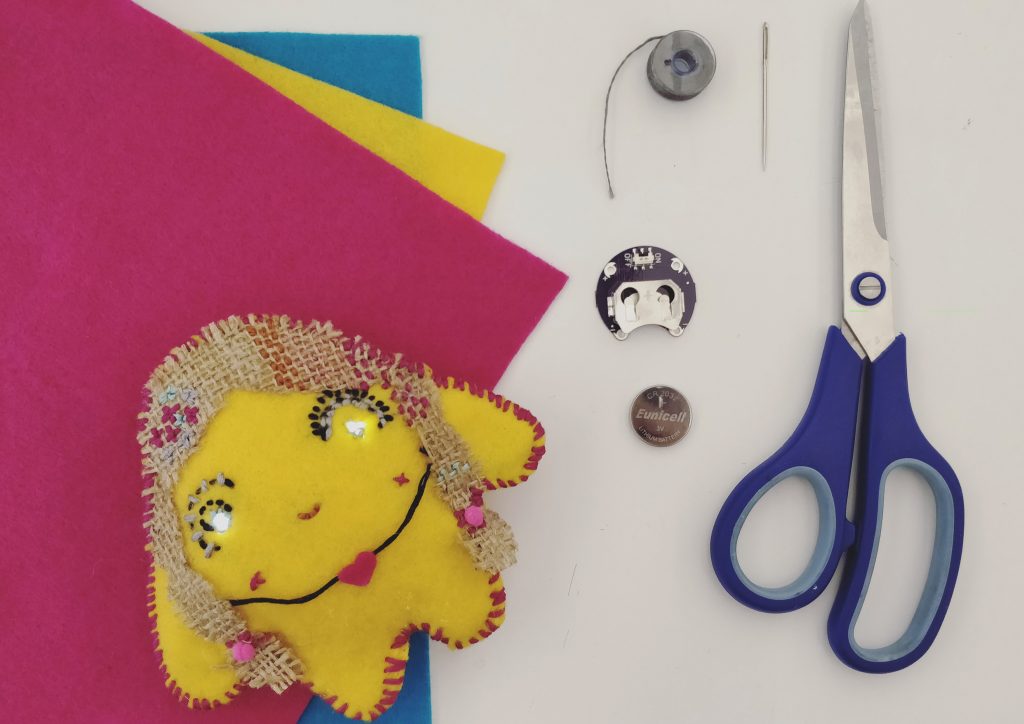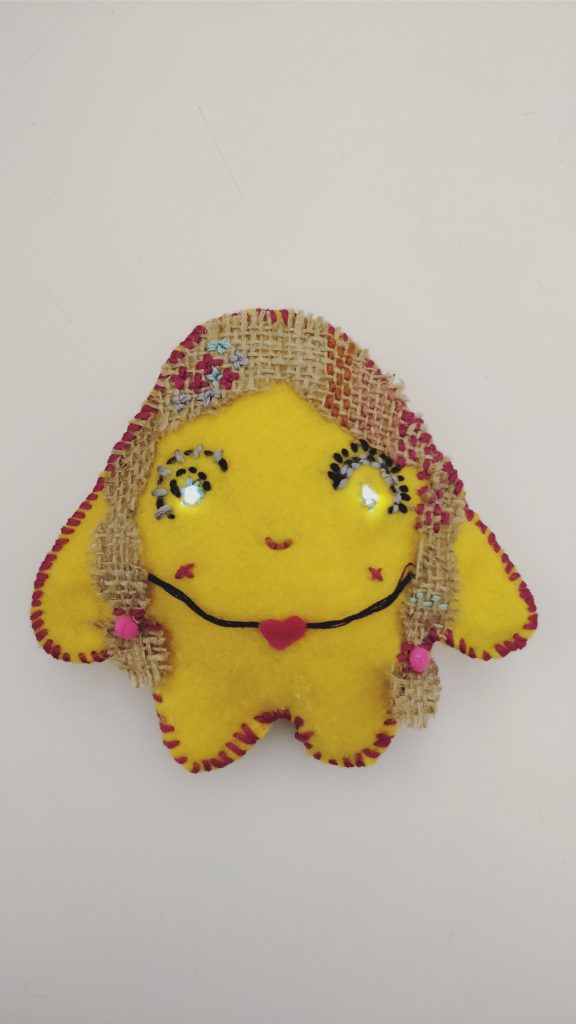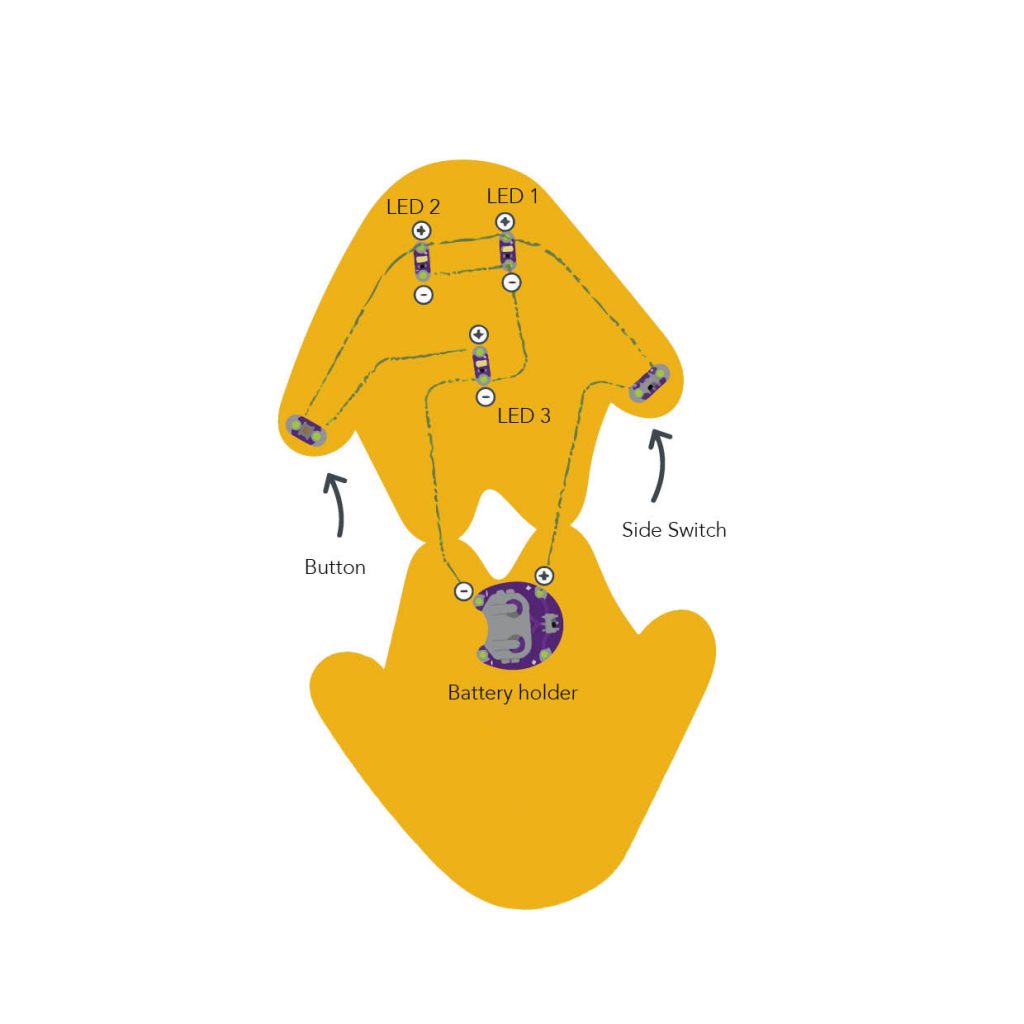For a very long time, I have been fascinated by e-textiles because they lie at the intersection of craft and electronics. I did not know where to begin my exploration from and decided to follow along a simple Sparkfun tutorial to make a light-up plush (https://learn.sparkfun.com/tutorials/light-up-plush)
Materials required
Lilypad ProtoSnap
3V Coin Cell Battery
Conductive thread
Needle
Plush pattern
Felt piece: 10 by 10 inches
Scissors
Fabric glue (optional)
Beads, pompoms, ribbons, buttons, glitter to decorate
Diagram (taken from the Sparkfun website)
Description of assembly
- Cut the plush pattern from the piece of felt
- Arrange the Lilypad ProtoSnap components on the pattern.
- Using conductive thread, make secure connections (loop around each tab at least 3-4 times) between the positive tab of the battery holder and one of the tabs of the switch.
- Connect the other side of the switch to the positive terminals of the top two LEDs that make up the eyes, and finally to one of the tabs of the button.
- Continue stitching, from the other side of the button to the positive tab of the last LED.
- Connect the negative sew tab of the first LED, with the second, through the third to the negative sew tab of the battery holder.
- Insert the battery, debug, and keep experimenting!
How it works
I was surprised to find that working with e-textiles isn’t very different from working with the Arduino hardware. It is based on the same principles of electronics that we are familiar with. A 3V coin cell powers the circuit, and the electrons, regulated through the side switch and the button, light up the LEDs.
Challenges
I had difficulty debugging my circuit. Unlike a “traditional” circuit, it was time-consuming to check the connections- as I had to re-embroider entire sections. Later I realized, that my circuit was getting shorted because of the long, untrimmed pieces of wire. After securing a few connections, and trimming the ends, it started working!
Future Iterations
I am excited about incorporating physical elements or characters in the process of digital storytelling. I feel they make the story more compelling. I was imagining a choose-your-own-adventure story, that plays out on the screen, depending on one’s choices in the real world. So these characters could act as controllers that are affecting the narrative.



